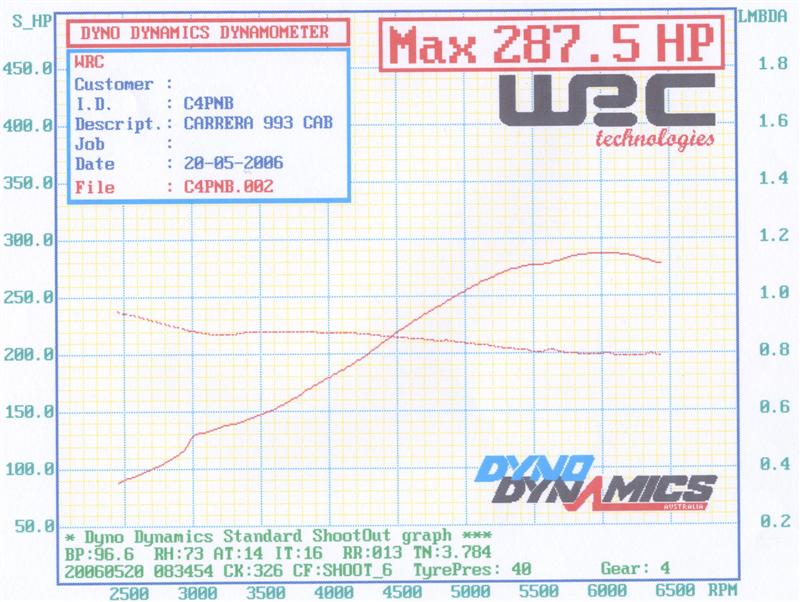Standard 250 cars should run 0.82 bar over atmoshpere (1.82 bar absolute, which is what the gauge should approximately show). 1 bar is 14.73psi, so you can convert between the two using that.
The 4 graphs you got show flywheel power vs. flywheel torque, vs. air fuel ratio (expressed as AFR or parts air to parts fuel), vs. boost (in psi) and the last showing rear wheel power vs. rear wheel torque. This is the one with the lower bhp figure in the top right.
The AFR one is possibly the only one needing much explanation. 14.7:1 is stoichiometric ratio, which is the ideal mix for burning petrol/air at peak efficiancy. AFR is often quoted without the ':1', so add that to the number to make the correct notation. anything over 14.7 is lean, and that is bad on a dyno graph as it can lead to high cylinder temperature and detonation. Even running 14.7, although it makes most power and least emissions (on cat-equipped cars anyway) will make the cylinder temps too high and the engine will not last long, so that is left for race engines with a rebuild schedule in the single figure hours rather than 200,000 miles. Ideally then you are looking for the AFR plot to be a flat line across the whole graph, probably around the 12.5 mark on the scale. The bottom of the graph is rich and anything 13 or above is probably getting a bit lean for a road going turbocharged car on a dyno.
The other way of expressing air fuel ratio is the lambda scale. I can't find the Greek lambda symbol on my PC, but it's an upside down y. On that scale stoichiometric is represented as 1.0 and anything below 1.0 is richer, above 1.0 is leaner.
Cat equipped cars on a constant throttle (i.e. cruising) maintain stoichiometric ratio (running "closed loop") by measuring the AFR with a lambda sensor and dynamically adjusting fuelling to achieve it. That is necessary to maximise economy and effectiveness of the cat. On wide open throttle even closed loop cars ignore the lambda sensor and use the fuel map in the ECU, hence it can be played with to alter the performance of even a cat equipped car.



.JPG)
.jpg)
.jpg)
.jpg)







